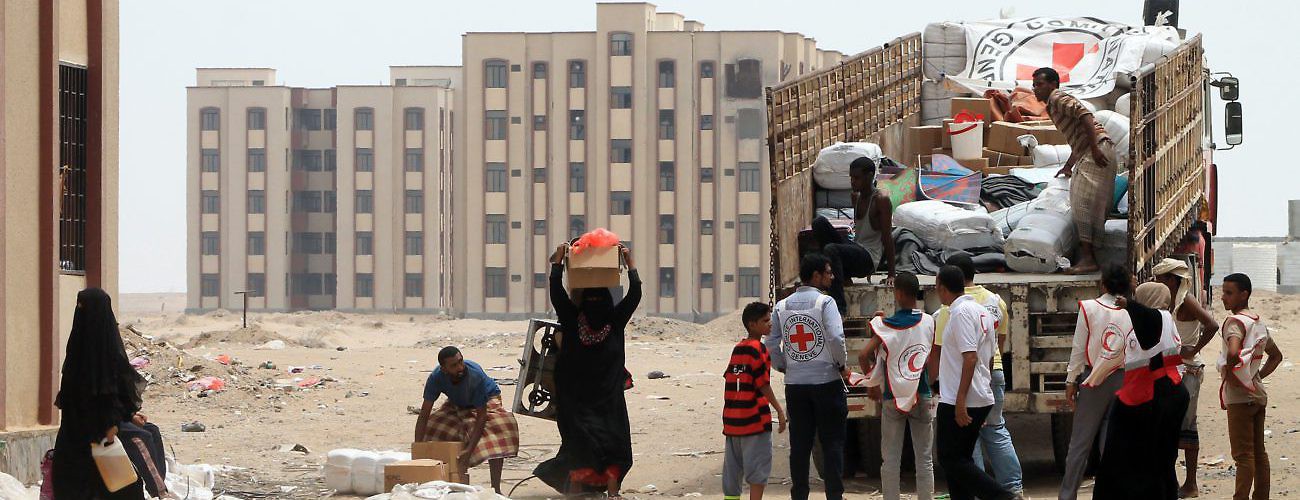Members of the Yemeni Red Crescent distribute aid to displaced families in the al-Saleh neighborhood north of the southern Yemeni city of Aden, June 22, 2015. Saleh al-Obeidi/Getty Images)
Two years into its current crisis, Yemen is torn apart by an interlinked series of conflicts with intricate and mobile front lines. These have resulted in what the UN has called “the largest humanitarian crisis in the world.” While compounded by decades of conflict, violence, and underdevelopment, the major cause of the humanitarian crisis in Yemen remains the conflict between the two competing governments, along with the intervention of the Saudi-led coalition.
This report assesses the humanitarian situation in Yemen, including the impact of the country’s conflicts on its healthcare system, economy, and infrastructure, as well as the resulting population movements. It also examines current humanitarian actors and responses in Yemen and in neighboring countries. It concludes by exploring several challenges and opportunities for humanitarian actors in Yemen. These include:
- Enhancing respect for humanitarian norms and principles: A strong and unified initiative aimed at enhancing respect for international humanitarian law could not only protect populations at risk but also ease tensions among different communities within and outside of Yemen. The UN Security Council could help in this area by playing a more proactive role. Humanitarian actors also need to strengthen the perception of their neutrality.
- Strengthening the humanitarian response: The many actors involved in the humanitarian response should improve coordination, adopt existing tools for publishing and sharing data, and explore innovative uses of technology. International humanitarian actors should also directly involve local private sector actors in humanitarian action and include local humanitarian actors in coordination and decision making. In addition, humanitarian organizations could push blockade authorities to facilitate access for both humanitarian and commercial shipments.
- Looking beyond immediate humanitarian needs: While it remains critical to invest in the humanitarian response, the international community also needs to invest in prevention in order to stem humanitarian needs and prevent further deterioration of the humanitarian crisis. This includes supporting Yemen’s healthcare facilities to prevent their total collapse and addressing the economic and financial impact of the lack of liquidity. A gender-based approach to the humanitarian response is also needed, reflecting women’s roles as potential peacemakers.








